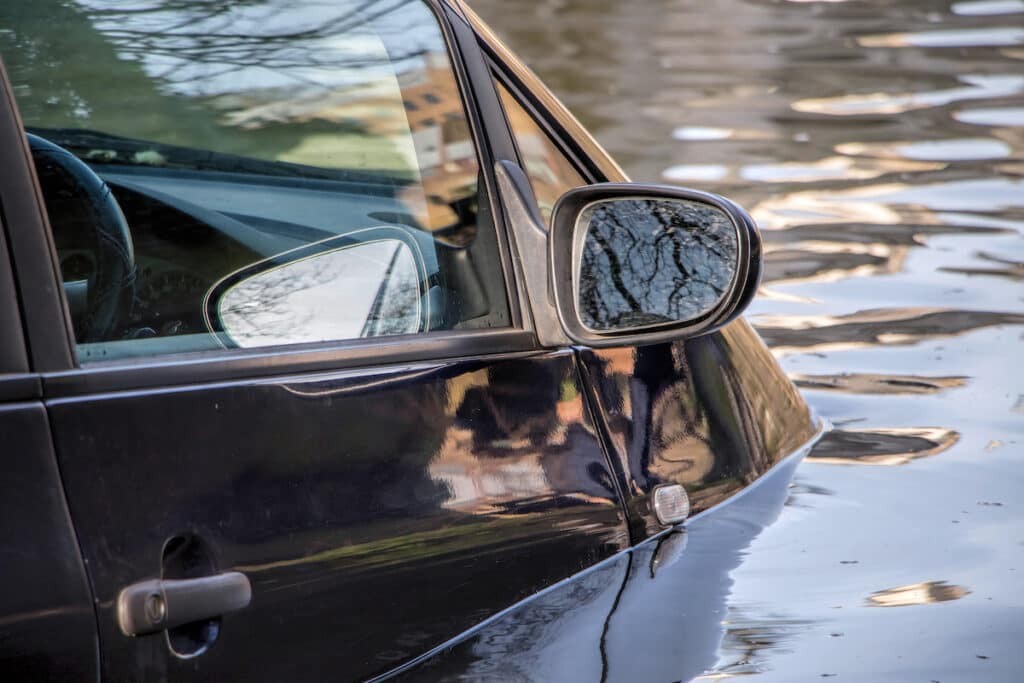Did you know that water immersion car accidents are more common than you might think? Studies indicate approximately 10,000 such incidents occur every year. A car plunging into water can quickly turn from an accident into a life-threatening situation. While survival is often possible, knowing how to react is crucial. Toyota of Orlando, as experts in vehicle safety, provides this essential guide on how to escape a submerged car, equipping you with the knowledge to act decisively in an emergency.
It may seem straightforward, but escaping a sinking car is surprisingly challenging. Vehicles can fill with water rapidly, often in under a minute. Submerged environments are dark and disorienting, and if your car is upside down or you’re injured, escape becomes even more complex. Preparation and knowledge are your best allies. Knowing how to escape a submerged car before an accident happens can drastically improve your chances of survival when every second counts.
Understanding the Urgency: Time is of the Essence
When a car enters water, the initial moments are critical. A vehicle might float for a very short time, typically between 30 seconds to 2 minutes, depending on its design and the circumstances. This brief period is your optimal window for escape. Panic is a major danger in these situations, consuming precious time and oxygen. Therefore, understanding the steps and acting swiftly are paramount.
The 5 Critical Steps to Escape a Sinking Car
Step 1: Stay Calm and Assess the Situation
Remaining calm is the first and most vital step, even though it’s understandably difficult. Panic consumes oxygen and impairs clear thinking, both of which are essential for survival. Focus on taking slow, deep breaths to ensure oxygen flow to your brain. Immediately communicate the situation and the plan of action to any passengers to help them stay calm as well. Quickly assess if anyone is injured and the general situation inside the car.
Step 2: Unbuckle Seatbelts Immediately
Before attempting anything else, ensure that everyone in the car immediately unbuckles their seatbelts. Seatbelts, while vital for accident safety on land, become a hindrance when submerged. Fumbling with a jammed seatbelt underwater can waste crucial seconds. Make sure all passengers, including yourself, are free from their restraints.
Step 3: Open or Break a Window – Your Primary Exit
Opening the car doors in a sinking car is often extremely difficult due to the external water pressure. While it might be possible initially before significant sinking occurs, attempting to open a door once the car is submerged can be futile and time-consuming. The most reliable exit point is usually a window. Here’s what you need to know:
- Power Windows: Electric windows may still function briefly after submersion, especially before water reaches the electrical components. Act immediately to roll down a window if possible. However, they can short-circuit quickly underwater.
- Breaking the Window: If the water level is already at the window or the electrics fail, you will likely need to break a window. This is where a car escape tool, often called a Lifehammer, becomes invaluable.
 Car escape tool, highlighting its use in breaking a car window for emergency exit
Car escape tool, highlighting its use in breaking a car window for emergency exit
Car windows are made of tempered glass, designed to withstand significant impact. Kicking or punching them out is usually ineffective, especially underwater with increasing pressure. A car escape tool is specifically designed with a hardened point to shatter tempered glass quickly and efficiently. Aim for a side window as they are typically larger than rear windows, providing easier egress, particularly if you have multiple passengers. Be prepared for a sudden rush of water when the window breaks, but this is necessary for escape. Prioritize getting children out of the window first, followed by other passengers, and then yourself.
Step 4: Forget Pressure Equalization – Escape Now
A dangerous myth suggests waiting for the car to fill with water to equalize pressure, theoretically making door opening easier. This is a misconception that can cost you your life. While pressure equalization will eventually occur, it takes time, during which you are trapped underwater and depleting your oxygen supply. Do not wait for pressure to equalize. Focus on escaping through a window immediately.
Step 5: Swim Upwards and to Safety
Once you and your passengers are out of the car, your immediate goal is to reach the surface and safety. Leave behind any belongings, as they will only hinder your ascent. If you are disoriented and unsure of which direction is up, look for air bubbles escaping from the sinking car – they will always travel upwards. Follow the bubbles to the surface. Once on the surface, swim to the nearest point of safety, whether it’s the shore, a boat, or anything that floats.
Pre-emptive Safety Measures: Be Prepared
While knowing how to escape a submerged car is vital, proactive measures can further enhance your safety. Keeping a car escape tool readily accessible in your vehicle, such as on your keychain or visor, ensures you have it within reach in an emergency. Mentally rehearsing these escape steps can also improve your reaction time under pressure. Being prepared is as important as knowing the escape techniques themselves.
In conclusion, understanding how to escape a submerged car is a critical piece of knowledge for all drivers. By staying calm, acting quickly, and following these steps, you can significantly increase your chances of survival in a terrifying and challenging situation. Remember, preparedness and swift action are key to escaping a sinking vehicle and reaching safety.
